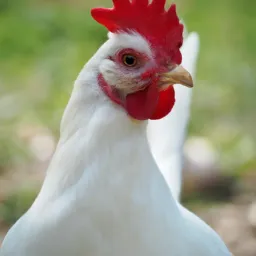Leghorns vs Other Breeds: Which One is the Best Egg Layer
When it comes to choosing a chicken breed for egg production, Leghorns are often at the top of many people’s lists.
These birds have been bred specifically for their incredible egg laying abilities and are known as one of the most productive breeds available today.
But how do they compare with other breeds when it comes to egg-laying prowess?
Let’s take a closer look at some key factors that make Leghorns stand out from the rest.
Breed Overview
The Leghorn breed originated in Italy during the 18th century and was initially used
for meat production.
However, over time, selective breeding focused on increasing their egg-laying ability led to them becoming one of the most popular choices among poultry farmers around the world.
Today, there are several different varieties of Leghorn chickens, including Brown Leghorns, White Leghorns, and Partridge Leghorns. All three types are known for their slender build, fast running speed, and exceptional egg-laying capacity.
Egg Laying Ability of Leghorns
Leghorn chickens are renowned for being excellent layers. On average, a healthy hen will produce around 250 eggs per year, which equates to roughly two eggs per week.
This makes them an ideal choice for anyone looking to generate a steady supply of fresh eggs for consumption or sale. In fact, some hens can even exceed this figure and lay upwards of 300 eggs per year!
The high level of productivity means that Leghorns require less feed than other breeds, making them more cost-effective to keep.
Behavior and Compatibility with Other Chickens
While Leghorns may not be the best choice if you want a friendly pet bird, they are generally easy to manage and don’t require much attention beyond providing food, water, and shelter. They tend to be quite independent and aren’t particularly social with humans or other animals.
That said, they can be aggressive towards each other and should always be kept in pairs rather than alone.

Additionally, because of their high energy levels, they need plenty of space to roam and exercise.
See also Activities and Toys for Happy, Healthy Chickens
Physical Characteristics, Coloration, and Brown vs White Eggs
One thing that sets Leghorns apart from other breeds is their distinct appearance.
With their long, thin legs and delicate features, these birds are truly beautiful creatures.
Their plumage varies depending on the variety, but all Leghorns have feathers that are soft and fluffy. When it comes to coloration, Brown Leghorns have mottled brown feathers while White Leghorns are exactly what their name suggests – pure white.
Finally, when it comes to egg coloration, Brown Leghorns typically lay eggs with darker yolks, whereas White Leghorns produce lighter colored eggs.
